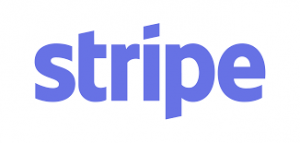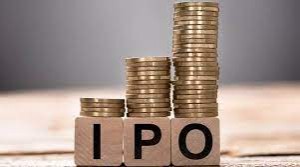Dublin, Ireland Nov 4, 2021 (Issuewire.com) - 2021 will be remembered as one of the biggest in IPO history. This is especially true in the realms of financial technology, of fintech. Robinhood, Coinbase, and Roblox. Despite 2021 being a big year for IPOs, 2020 was an even bigger IPO year with names like Palantir, Airbnb, and Snowflake.
So, will 2022 be another year with huge IPOs? This will be answered with the IPO of the payment processing company Stripe, which is set to IPO early in 2022.
There is more to this particular IPO, especially for investors looking to join a veritable freight train, because Elon Musk is one of the very first to have invested in Stripe way back in 2011. For someone now worth over $300 billion to take an interest in a company, there must be something special about them.
Before the IPO comes, let’s help give you all the information you need to know about Stripe, a potentially monstrous IPO for 2022.
What Is Stripe?
Stripe is a financial services company founded in 2009 by two Irish brothers, John and Patrick Collison. The company itself started in 2009, though the seed money – a critical point in any new company’s journey – came in around 2010 and 2011. This was when angel investing giants like Elon Musk and Peter Thiel came into the picture.
Ironically enough, Musk and Thiel were co-creators of PayPal, which is itself a massive, multinational payment processing company. PayPal is now one of the primary competitors to Stripe, which is set to IPO next year.
What Does Stripe Do?
As with any good business, Stripe has several revenue streams that have helped push it to the top of the list of IPOs on investors’ radars next year. The most important and most profitable is the payment processing part of the business.
Using application programming interfaces (APIs), web developers can implement Stripe into online stores to allow customers to use several different payment methods to complete transactions.
The complication with online transactions is that several key components are necessary. Stripe combined these into a single service, providing swift and secure transactions.
Once the money started coming in from early investors, of which Elon Musk was one, Stripe added functionality to let online businesses not only create invoices to send customers but also recurring billing services, which is a feature especially catered toward online freelancers and small e-store vendors.
Growth continued, and Stripe was able to add point-of-sale terminals for brick-and-mortar companies looking to enhance the payment options customers could use. Point-of-sale terminals are just credit and debit card readers, though the many types of cards used around the world were a hurdle. Stripe overcame that hurdle, supporting both a magnetic stripe and chip reader.
In addition to the retail payment processing, Stripe focuses on what they call the Atlas platform. This tool was created to help startups get registered faster from anywhere in the world.
After the success of Atlas, Stripe created six more corporate finance tools for accounting assistance, identity protection, tax assistance (for things like sales tax), fraud and risk management, and even carbon footprint reduction.
With the current trajectory of corporate oversight, all of these tools will certainly prove to be huge sellers of Stripe as a whole to investors. This will be even more true after the company IPOs and becomes available to regular investors.
A Brief Background of Stripe’s Rise
Stripe is clearly poised to be a huge company in the future, but how did the company go from a small $20 million seed investment from Elon Musk, Peter Thiel, and three other investors to an estimated $95 billion valuation in just 10 years?
The Collison brothers created the company in the gap between the peak of the antiquated banking system and the rise of online payments. 2010 was only 11 years ago after all, and PayPal was already a proven name in online transactions. The only problem was that PayPal was plagued by integration issues, keeping it from growing faster than perhaps it should have.
Before the bulk of the outside investors came in, the Collison brothers became one of the 2% of companies that make it through the Y Combinator application process. With both the seed money and the advice from the startup company, the were able to obtain the attention of, as we mentioned before, Musk, Thiel, and a few other angel investment companies.
In 2012, Stripe was able to secure Series A funding from Sequoia Capital. While the name Sequoia Capital may not ring any bells, surly names like Apple, Google, Oracle, YouTube (now owned by Google), Instagram, and even PayPal ring a bell? With funding of about $18 million in 2012, Stripe joined the ranks of such companies.
2012 saw further Series B funding of $20 million. Then, in 2014, after two rounds of Series C funding, Stripe obtained additional funding of $150million. After these rounds, the estimated valuation in 2014 became $3.5 billion, a far cry from the $100 million estimated value in 2012.
Fast forward a few years, and several early investors, such as Sequoia Capital and General Catalyst (which provided Series B funding in 2012), pushed in another $250 million in funding in 2019, followed by another $600 million in 2020.
By March of 2021, the estimated valuation of Stripe was $95 billion. While you might see capital raises as only gambling bets which may result in a winning stock, the company built itself by not only taking on investors but also listening to the guidance about the best ways to direct the growth of the company.
From individuals like Elon Musk to major angel investing companies like Sequoia Capital, Stripe grew capital, services, and impact through the sound guidance of some of the most successful investors in history.
What Makes Stripe So Valuable?
You’ve heard of payment services like Stripe before. PayPal is one of the obvious competitors, as is Square, which was the brainchild of Twitter’s Jack Dorsey.
The genius of focusing on payment processing comes when you really think about the leaps and bounds the industry has come in the last few decades. If you’re old enough to remember the credit card sliders, you know exactly how far we’ve come.
Those slips were physically mailed and processed, and days passed before money actually changed from one account to the other. So, the advancement of payment processing services has created a world where money goes from one bank to another within minutes rather than days.
Not only is the speed of processing a critical factor but also security of the transaction is important. Stripe has some of the most sophisticated security systems and experts backing transactions in the world. While the revenue generation is a key component, none of it would be possible without state-of-the-art security protocols.
The final point to make about the value of Stripe is in the number of transactions that occur on a daily basis. In 2018, one report shows that there were over 100 million daily transactions. Stripe charges 2.9% of each transaction plus a flat $0.30 per transaction. If you assume the market is 100 million instances per day, that creates a market value of almost $10 billion per year based solely on the $0.30 transaction minimum.
Add to that the variable 2.9%, and the figures go up astronomically.
Why Did Elon Musk Invest In Stripe?
Every investor has their reasons, though Musk hasn’t publicly released his thought process behind his investment in Stripe, with one exception. In an interview in 2012, Musk said, “I am a very tiny investor in Stripe and have no idea how they are doing.”
While Musk has always taken a keen interest in any business that disrupts the status quo, he has always focused his attentions on the companies that he runs – Tesla and SpaceX among the top of his list. It could simply be that Stripe showed a capacity to disrupt the online payment industry.
While we can’t speak to why Mr. Musk chooses to invest in anything in particular, he was involved in the very foundations of online payment processing via PayPal and simply has a keen understanding of what might make a particular company more successful.
This expertise is perhaps one of the primary reasons Elon Musk saw an excellent opportunity when it was presented to him.
Did Musk’s Investment Have An Effect On The Value?
The beginning of 2021 saw excitement in the stock market like investors haven’t seen since the 2008 financial crisis. It wasn’t only stocks but also cryptocurrencies that saw incredible volatility.
While it’s certainly arguable, Musk may have had a hand in some of that volatility due to several Tweets he sent out. Specifically, Tweets from Elon Musk in support of the moves around both GameStop and Dogecoin may have driven more support for those historic moves.
That being said, Stripe has grown somewhat under the radar compared to other excitement in 2020 and 2021. Besides that, Musk’s involvement occurred in 2011 when Stripe was little more than a small company vying for success among other internet trailblazers.
Who Else Owns Stripe?
The majority of the company is owned by the Collison brothers who started it. However, other major investors include Sequoia Capital, Fidelity Investments, General Catalyst, and Andreessen Horowitz.
Tiger Global Management is another major investor responsible for both Series E and Series F capital raises. Tiger Capital was also an investor in such names as Facebook, Spotify, Alibaba, Coinbase, Spotify, and several other hugely successful companies.
What Is the Future of Stripe?
We are in a time where global transactions continue to migrate to online stores. It’s not even just Amazon that should come to mind. Some of the biggest Stripe partners are services like Uber and Lyft. Where past generations had to have cash on hand to pay cabbies, the future is in being able to pay with a few swipes of your phone.
Where is this industry headed? Only companies like Stripe can say. Amazon is creating stores in airports which can follow you via camera and know what products you pick up, charging you upon exiting the store without even swiping a single piece of plastic.
Stripe’s growth could push more toward corporate finance, which any value investor like Warren Buffett will tell you is getting more and more complicated. They already have several apps that could prove useful to any mid-to large-sized online business. With a few tweaks and an approachable platform, Stripe could become a global force in simplifying corporate finance.
How To Invest In Stripe Pre-IPO
For the most part, IPO participation depends on knowing those involved in the process. Banks like Goldman Sachs typically structure the deals to list the stock on an exchange and issue shares to specific brokerages for distribution.
While it used to be extremely difficult, you can focus your funds on the brokerages that typically specialize in companies coming up on their IPO. You can look at ipowise.net for ways to find such companies or even find ways to obtain shares.
The point of the exchange is to provide easy access for buyers and sellers of shares. Since the stock isn’t listed on any exchange before an IPO, the only way to buy shares of Stripe right now is to buy them directly from a current shareholder in the company.
This is likely not possible for the vast majority of investors. So, the next step is to await the IPO coming next year.
How To Invest In Stripe After IPO
Investing in Stripe post-IPO is fairly straightforward. You simply have to go to a broker that has the company listed and click the buy button to buy shares in the company.
When Is Stripe’s IPO?
The date of the IPO is currently unknown. The original date was supposed to be around July 2021, though this was delayed to 2022.
The best way for you to stay updated once the IPO date is released is to keep following ipowise.net.
What Else Has Musk Invested In?
The largest investment that Elon Musk has personally made is in Tesla. He is famously hardheaded about the growth of the company, even turning his back on nearly every facet of the automotive industry. While there were some hiccups along the way, Tesla has become one of the dominant names in electric vehicles, even taking a huge order from car rental giant Hertz.
SpaceX is one of the other major companies Musk has personally invested in. While Tesla is a publicly traded company, SpaceX remains privately held between Musk and several other individual and corporate investors. Obviously their goal of further space exploration is slowly pushing toward reality.
What’s Next: Stripe IPO
Stripe is set to be one of the biggest IPOs of 2022. Many investors will pile in at the outset to own shares but be mindful of not only the IPO process but also the company itself before deciding the invest.
Shares will be very hard to come by Pre-IPO, but websites like ipowise.net are strategically placed to seek out individuals willing to sell shares, even at this stage. After the IPO, investors can simply buy shares as usual and add Stripe to their portfolio.
Media Contact
IpoWise *****@ipowise.net http://ipowise.net













